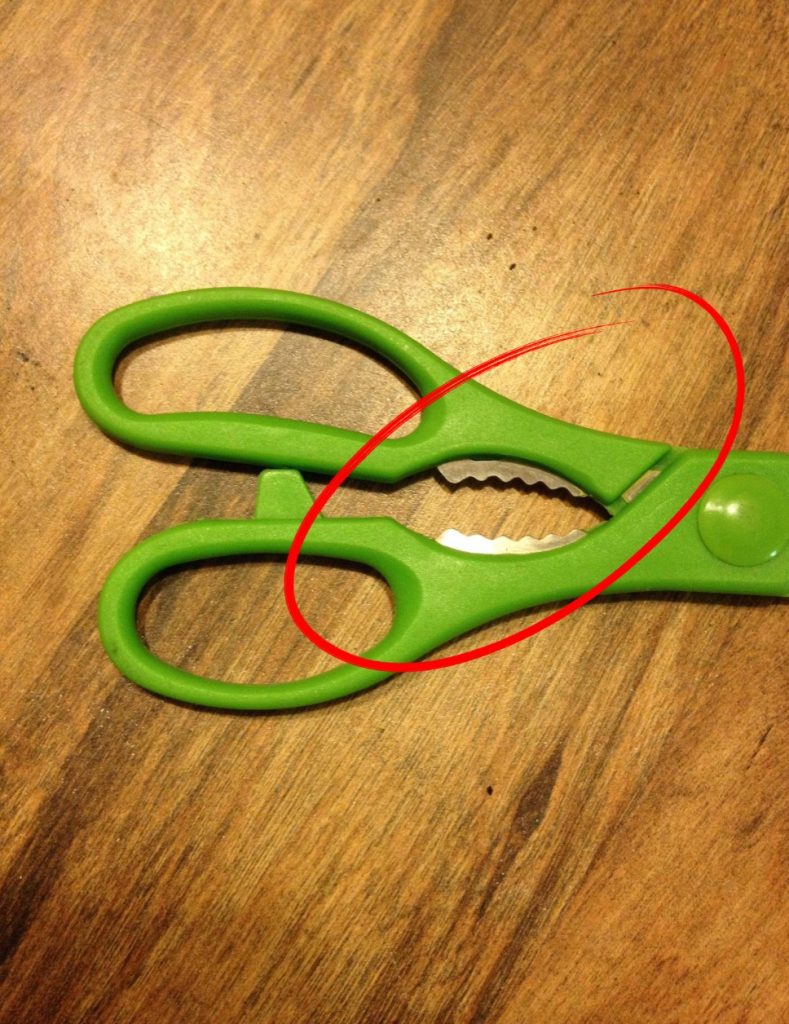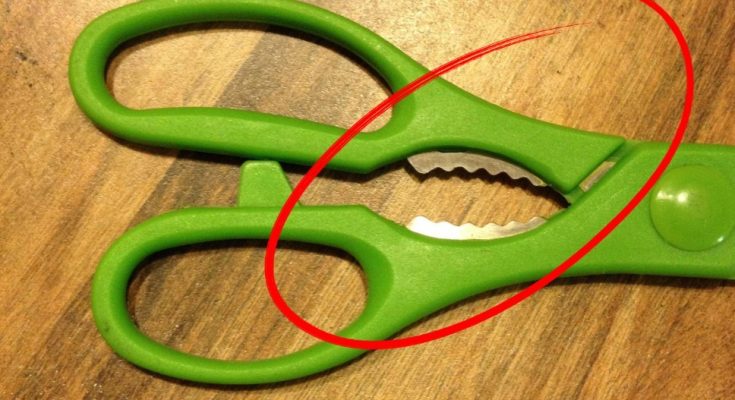If you’ve ever inspected your kitchen scissors closely, you might have noticed a strange little toothed section near the handles—those jagged ridges tucked just behind where your fingers grip. At first glance, it might seem like a random design quirk or even a leftover from manufacturing. Many people don’t realize this part is anything more than decoration. But here’s the secret: it’s a clever, built-in multi-tool designed to make your kitchen tasks easier.

Understanding the Purpose of the Toothed Section on Kitchen Scissors
That toothed part, often called a jar opener, nutcracker, or bone gripper depending on your scissors’ style, serves as a traction enhancer. It’s usually positioned where the handles start to curve inward and made from strong metal or reinforced plastic. When you close your scissors slowly, those teeth mesh perfectly, creating a gripping surface that can hold objects firmly without slipping. This little feature transforms your scissors into more than just a cutting tool—it becomes a versatile helper.
How to Use the Toothed Section as a Jar Opener
Ever struggled to open a stubborn jar lid? You’re not alone. Vacuum-sealed jars can feel impossible to twist open, leaving you frustrated and risking a sore wrist. Instead of grabbing a towel or banging the jar on the counter, try the toothed section of your kitchen scissors.
Video : WHY DO KITCHEN SCISSORS HAVE TEETH? Clever Kitchen Tips You Need to Try Now
Simply close the scissors so the teeth meet, slide the jar lid between the ridges, hold the scissors firmly, and twist the jar with your other hand. The ridged grip increases traction and applies even pressure, making it easier to break the seal and open the jar. This method also works well for smaller bottles like soda, sauces, or tonic water—especially helpful if you have arthritis or struggle with grip strength.
Crack Nuts Without a Nutcracker Using Your Kitchen Shears
No nutcracker? No problem. That jagged section can gently crack nutshells like walnuts, pecans, or hazelnuts. Place a nut in the toothed part, squeeze slowly until you hear a crack, then rotate and repeat until the shell loosens enough to peel away. The trick here is to apply steady, controlled pressure—you want to break the shell without smashing the nut inside.
For heavy-duty kitchen scissors, particularly poultry or bone shears, this gripping area can also assist in breaking small poultry bones. When preparing chicken wings or thighs, grip the bone in the toothed section and apply firm pressure. This grip prevents slipping and helps you make cleaner, safer cuts.

Other Clever Uses for the Toothed Grip
Beyond jars and nuts, that toothed section shines in several unexpected ways. Use it to:
- Grip slippery plastic caps on juice or milk jugs
- Crack crab legs or lobster shells gently
- Twist out soft synthetic corks
- Hold stubborn twist-ties or sealed plastic bags steady while cutting
Basically, whenever your hands are slipping or you’re struggling to get a firm grip, this small feature can save the day. It’s like having a mini multi-tool built right into your scissors without taking up extra space in your kitchen drawers.
Why Your Kitchen Needs Multi-Purpose Scissors with This Feature
Not all kitchen scissors come with this toothed gripper, but it’s most common on heavy-duty models, poultry shears, and multipurpose utility scissors. Having this built-in function means you don’t need separate tools cluttering your kitchen—no jar openers, nutcrackers, or bone cutters taking up room. Instead, one sturdy pair of scissors can handle multiple tasks with ease.
Video : Kitchen Scissors | Kitchen Scissors for Chicken, Poultry, Fish, Vegetables Cutting
To spot this feature, look between the handles for a ridged or notched area that aligns when the scissors close. If you see it, congratulations—you have a built-in helper waiting to be put to work.
Safety Tips for Using the Toothed Section Effectively
While this toothed grip is handy, it’s important to use it wisely. Don’t force it on nuts or bones that are too tough for your scissors; this can damage the tool or cause injury. Always keep your fingers clear of the teeth when squeezing to avoid pinching. After use, clean the toothed area thoroughly, especially if it came in contact with raw meat or sticky substances, since debris can get trapped in the grooves.
Also, avoid using it for non-food tasks like opening paint cans or twisting wires—those jobs can ruin your scissors’ delicate mechanism.
Conclusion: Unlock Hidden Power in Your Kitchen Scissors

At first glance, that jagged notch on your kitchen scissors might seem like a weird or useless design feature. But in reality, it’s a small powerhouse that adds huge versatility. From loosening tight jar lids to cracking nuts and gripping tricky items, this toothed section turns a simple cutting tool into a multi-functional kitchen essential.
Next time you reach for your scissors, remember—you’re holding more than just blades. You’ve got a jar opener, nutcracker, bone gripper, and general-purpose traction tool all rolled into one. The only trick is to actually use it and discover how much easier your kitchen tasks can be.



